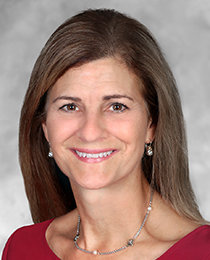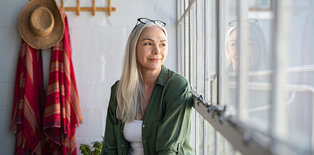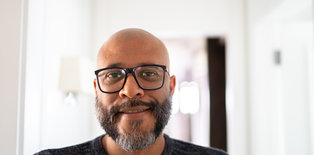Should I Do a Breast Self-Exam? Maybe, Maybe Not

For many years, the general recommendation was for women to do a breast self-exam once a month to detect breast cancer. The breast self-exam was designed to help familiarize women with their own breast tissue so that they would be more likely to notice a lump that could be a cancerous mass sooner and receive treatment in a timely manner. Recently, though, that recommendation has fallen by the wayside.
Why are breast self-exams no longer recommended?
To be clear, there's nothing wrong with doing a breast self-exam as part of a total cancer screening practice. If you are comfortable examining your own breasts and conducting an at-home exam at regular intervals and it would help you feel more reassured, that's great.
Recent studies though have indicated that breast self-exams could actually do more harm than good. The vast majority of self-detected lumps are not cancer and for many women the pressure to perform their own examination can induce anxiety as well as the inconvenience and cost that comes from testing and follow up. Therefore, in 2009, the United States Preventive Service Task Force downgraded their recommendation for breast self-exams, stating "The harms resulting from screening for breast cancer include psychological harms, unnecessary imaging tests and biopsies in women without cancer, and inconvenience due to false-positive screening results."
A breast self-exam is not a comprehensive tool for breast cancer screening
The breast self-exam was developed in the 1950s, before mammography or any "easy" imaging of breast tissue was readily available. It served a purpose and undoubtedly helped save many lives. But with the advancements of medical imaging in general, and mammography in particular, there are concerns that in addition to potentially causing harm with "false positive" diagnoses, women might consider a breast self-exam to be an adequate, and only, tool for checking for breast cancer.
In fact, there's a real risk of breast cancer being undiagnosed by relying on self-exams. Right now, nothing can replace the recommended annual mammogram screening for average risk women over the age of 40.
The American Cancer Society points out that being familiar with your body, especially your breast tissue, is important and to make note of any changes to your doctor as soon as possible. But it is still vitally important to do an annual mammogram screening to detect breast cancer early, before it can be felt. Mammography does not find all breast cancers, however, and if you do feel a lump, it is important to mention that when you have your mammogram, additional testing with ultrasound may also be needed for a complete examination.
If you are 40 years or older and have not begun your annual mammogram screenings, the Anne C. Pappas Center for Breast Imaging can help you get started. Visit us online or give us a call at 401-444-7770.

About the Author:
Martha B. Mainiero, MD
Dr. Martha Mainiero is a radiologist and director of the Anne C. Pappas Center for Breast Imaging at Rhode Island Hospital.
Lifespan Living Newsletter

Anne C. Pappas Center for Breast Imaging
If you are 40 years or older and have not begun your annual mammogram screenings, the Anne C. Pappas Center for Breast Imaging can help you get started.
Find a Doctor

The right provider is in our network
Search more than 1,200 providers in our network.



